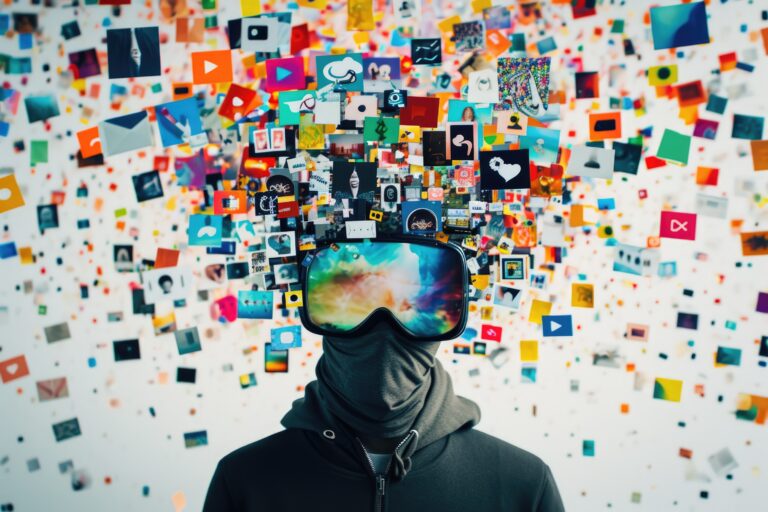The Psychology of Viral Content: Why Some Campaigns Spread and Others Don't
In the digital era, making content that goes viral on social media platforms and receives huge engagement is the holy grail of digital marketing. However, despite numerous tries and significant investments, numerous campaigns fail to reach heights while others surprisingly catch the imagination of millions collectively. Even the best efforts of Kochi Ernakulam’s Best Digital Marketing Agency cannot always anticipate or ensure such results. What distinguishes viral sensations from something that will be forgotten is not just chance or timing—but a subtle interplay of psychological cues that drive individuals to share.
We’ve studied hundreds of viral campaigns at Digicult Global to distill the psychological factors behind content sharing. In this article, we’ll dive into the science of virality and give you actionable tips to make your content go viral
The Emotional Triggers Behind Sharing Behavior
The Arousal Model of Information Sharing
A study from the University of Pennsylvania discovered that material that elicits high-arousal emotions—either positive or negative—is more apt to be viral than material that elicits low-arousal or neutral feelings. High-arousal emotions are:
· Awe: Content that causes astonishment and wonder
· Excitement: Content that creates anticipation and excitement
· Amusement: Material that causes laughter and happiness
· Anger: Material that causes outrage or indignation
· Anxiety: Material that causes tension or worry
When Red Bull filmed Felix Baumgartner’s space jump, the video went viral not only because of the stunt, but because it created a powerful feeling of awe and wonder in spectators. In the same way, Thai Life Insurance’s sentimental ads always go viral because they elicit strong feelings of sympathy and inspiration.
The Positivity Bias
Though sharing is spurred both by positive and negative emotions, studies by Jonah Berger and Katherine Milkman indicate that positive content tends to perform better than negative content in terms of being widely shared. Individuals would rather share items that:
1. Make them appear good to their connections
1. Make them appear good to their connections
3. Support their ideal self
This is the reason why positive stories, motivating successes, and amusing posts are shared more than negative content. When creating content, think of how its sharing would look in relation to the social identity of the sharer.

Social Currency and Status
The Impression Management Theory
Individuals share content in part as a form of impression management—to influence others’ perceptions of them. Content that is “social currency” allows sharers to gain a sense of appearing knowledgeable, discerning, funny, or trendy.
Blendtec’s “Will It Blend?” series was viral because making these videos available signaled that the sharer was in on a fun cultural experience. In the same way, being an early sharer of complicated infographics or industry intelligence makes one appear informed and worth consulting.
The Exclusivity Effect
Content that makes individuals feel like insiders or offers exclusive information creates a strong motivation to share. That is the reason why:
· Early access opportunities
· Behind-the-scenes content
· Insider information
· Limited-time offers
When Dropbox provided extra storage for referrals, they leveraged both exclusivity and functional value, building a viral growth engine that enabled them to scale fast.
Practical Value and Information Utility
The Utility Principle
Problem-solving, question-answering, or useful content has native sharing value. Berger’s research indicates that useful content is shared because:
4. It enables people to assist others (social bonding)
5. It proves the sharer’s expertise and benevolence
6. It delivers real worth to the recipient
BuzzFeed’s life tips, DIY guides, and food hacks go viral all the time because they provide immediate functional value. Likewise, infographics that break down complex data into bite-sized pieces spread far and wide because they offer utility coupled with shareability.
The Simplicity Factor
To spread, content needs to be simple to understand and remember. The cognitive fluency principle posits that individuals tend to favor information that is simple to process. Viral content generally contains:
· Clarity, concision in messaging
· Strong visual components
· Concepts that are easily understood
· Catchy hooks or slogans
Dollar Shave Club’s viral launch video became a hit in part because its value proposition was remarkably straightforward: “A great shave for a few bucks a month.” The fact that it was easy to grasp, remember, and retell made it very easy for viewers to share the idea.
Narrative Structure and Storytelling
The Transportation Theory
Well-told stories bring readers into a world of story, lowering counterarguing and raising emotional involvement. Content that has good narrative content is more viral because:
7. Stories remain longer in memory than facts
8. Narratives generate emotional connections
9. Stories make people sense information
The “Share a Coke” campaign worked because it encouraged consumers to be part of an individual narrative. Likewise, Google’s “Year in Search” videos make it to the internet each year because they compile individual searches into a gripping shared narrative of our collective experience.
The Curiosity Gap
Material that creates curiosity by highlighting a dissonance between what is known and what is wanted to know creates a high motivation to eliminate the dissonance. Headlines that are promising of worthy content without revealing too much create what psychologists call a “curiosity gap” that drives clicks and shares; this is a trick even the Best Web Design & Development Company in Kochi, Ernakulam may use in their online tactics.
Social Proof and Conformity
The Bandwagon Effect
Human beings are wont to imitate habits or adopt attitudes when they observe others doing so. This psychological phenomenon, which is known as social proof, is the reason why material that already has considerable engagement receives even more.
The ALS Ice Bucket Challenge spread worldwide almost entirely because it harnessed social proof by public nomination. Every participant generated social pressure for other people to take part, giving way to a domino effect of participation and sharing.
The FOMO Factor
Fear of missing out (FOMO) is a strong psychological motivator of sharing behavior. Content that resonates at cultural moments or trending topics is enhanced by individuals‘ needs to join others in shared experience.
Oreo’s well-known “Dunk in the Dark” tweet during the 2013 Super Bowl blackout was viral because it resonated with something that everyone was experiencing at exactly the same time. The trend created pressure to share before the moment elapsed.
Conclusion: The Science and Art of Virality
It‘s not tricks or gimmicks that make viral content, but understanding basic human psychology and building genuine connections. There is no formula for virality, yet there are types of content that are most likely to spread, involving powerful emotional triggers, useful value, social currency, and simplicity.
At Digicult Global, we are convinced the most effective viral campaigns begin with a thorough comprehension of audience psychology and culminate in scrupulous execution. By taking these research-driven principles and applying them to your content strategy, you can enhance your campaigns’ ability to gain attention, encourage sharing, and gain that coveted viral status by leaps and bounds.
Keep in mind that virality is only a means to an end—the real gauge of success is how well your content serves your business needs and forms meaningful connections with your viewers.


